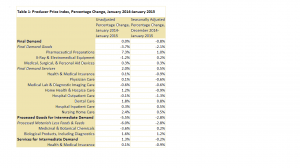Obamacare’s Shrinking Costs Should Bring Tax Cuts
 The Congressional Budget Office’s March budget baseline updates its estimates of costs and insurance coverage due to Obamacare. The March baseline estimates that the gross cost of Obamacare’s subsidies and Medicaid spending for the years 2016 through 2025 will be $1.7 trillion, $286 billion less than it had estimated in the January baseline.
The Congressional Budget Office’s March budget baseline updates its estimates of costs and insurance coverage due to Obamacare. The March baseline estimates that the gross cost of Obamacare’s subsidies and Medicaid spending for the years 2016 through 2025 will be $1.7 trillion, $286 billion less than it had estimated in the January baseline.
The CBO calculates a so-called “net cost” by subtracting revenues from businesses and individuals paying the mandate/fine/penalty/tax for not buying Obamacare, the “Cadillac tax” on high-cost health cost insurance, and the effect of changes in taxable compensation. This net cost has shrunk by $142 billion to $1,207 billion.
Even more impressive are the reductions in the cost of Obamacare from the CBO’s original March 2010 score of Obamacare. The two estimates overlap for the seven years, 2015 through 2021. The original estimate was that Obamacare’s gross cost would be $1.4 trillion over the period, and the net cost $1 trillion. These have shrunk to $992 billion and $751 billion, reductions of 28 percent and 29 percent.
When the CBO issues a new baseline, it updates its estimate of Obamacare’s insurance provisions. What it does not do is update its estimate of revenues from the host of other taxes in the Affordable Care Act, such as the medical-device excise tax.
So, it is not immediately obvious that Obamacare’s shrinking cost estimates should open the door to cutting some of those harmful taxes – which they should.




